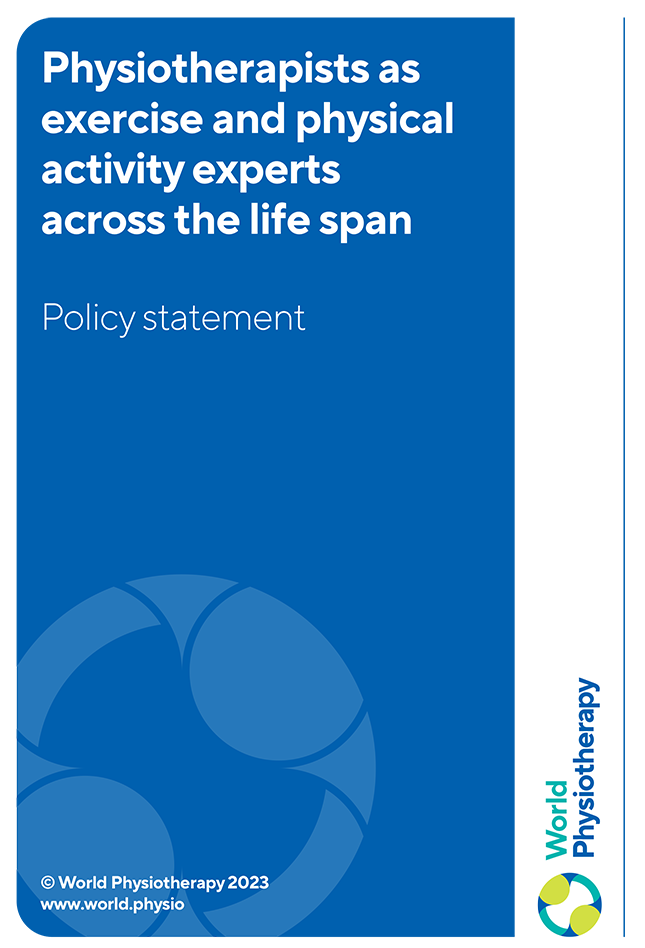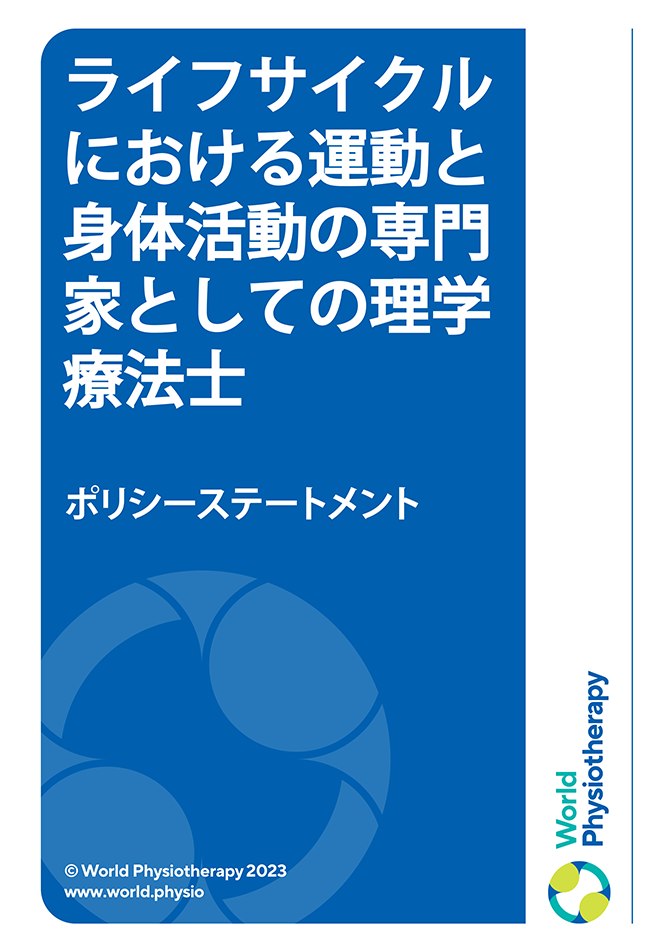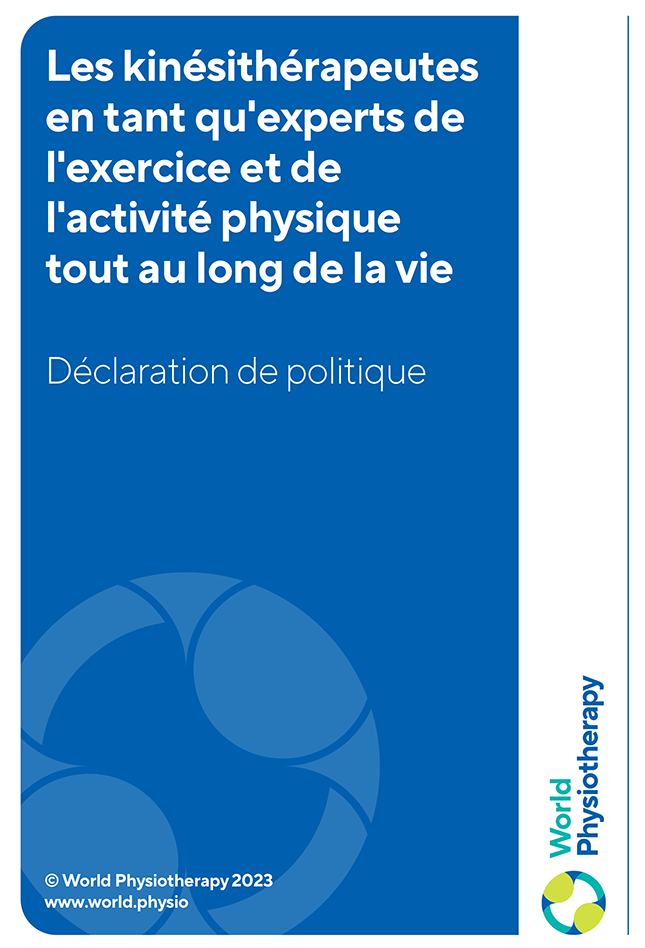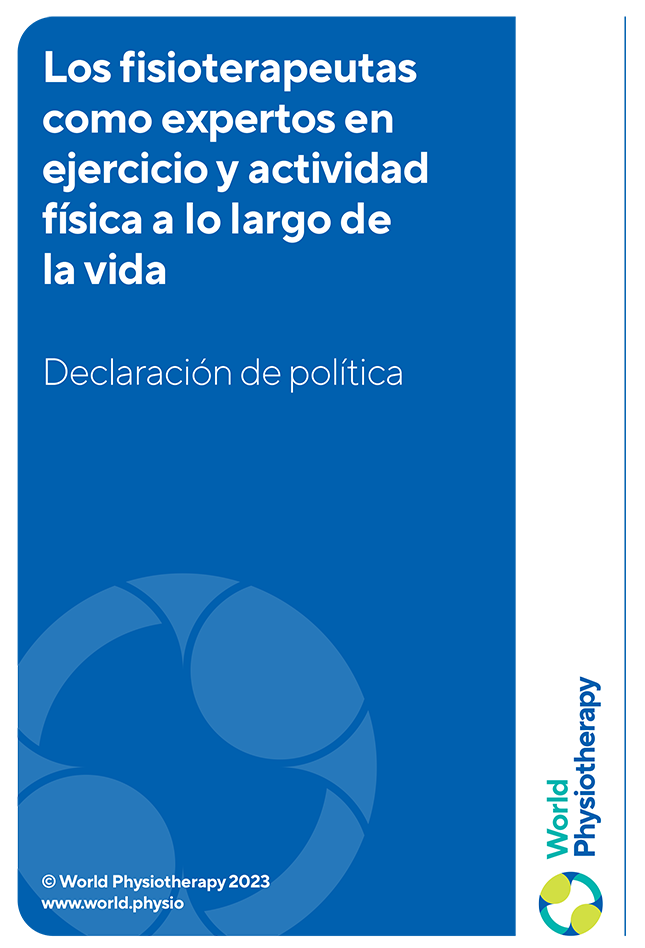World Physiotherapy believes that with growing numbers of people leading increasingly sedentary lifestyles and that physical inactivity is one of the leading risk factors for non-communicable diseases leading to morbidity, disabilityDisability: The umbrella term for impairments, activity limitations, and participation restrictions. It denotes the negative aspects of the interaction between an individual (with a health condition) and that individual’s contextual factors (environmental and personal factors). Personal factors are the particular background of an individual’s life and living, and comprise features of the individual that are not part of a health condition or health states, such as: gender, race, age, fitness, lifestyle, habits, coping styles, social background, education, profession, past and current experience, overall behaviour pattern, character style, individual psychological assets and other characteristics, all or any of which may play a role in disability in any level. Environmental factors are external factors that make up the physical, social and attitudinal environment in which people live and conduct their lives. Disability can be described at three levels: body (impairment of body function or structure), person (activity limitations) and society (participation restrictions). View full list of glossary terms, and mortality, it is imperative that effective strategies for exerciseExercise: A subcategory of physical activity that is planned, structured, repetitive, and purposeful in the sense that the improvement or maintenance of one or more components of physical fitness is the objective. Physical activity includes exercise as well as other activities which involve bodily movement and are done as part of playing, working, active transportation, house chores and recreational activities. View full list of glossary terms and physical activityActivity: The execution of a task or action by an individual. View full list of glossary terms across the lifespan are implemented. As experts in movement and exerciseExercise: A subcategory of physical activity that is planned, structured, repetitive, and purposeful in the sense that the improvement or maintenance of one or more components of physical fitness is the objective. Physical activity includes exercise as well as other activities which involve bodily movement and are done as part of playing, working, active transportation, house chores and recreational activities. View full list of glossary terms and with a thorough knowledge of risk factors and pathology and their effects on all systems, physiotherapists are the ideal professionals to promote, guide, prescribePrescribe: 'Prescribe' has several meanings in the context of physical therapy: Prescribe (practice) — the setting out of a programme of exercises or other activities, such as postures, work accommodations, assistive device use to be undertaken by the patient/client and/or their carers. Prescribe (regulation) — the setting out of specific parts of legislation. Prescribe (medicines) — to request in writing, in the appropriate manner, the supply and administration of a prescription only medicine for use by a named patient. Only appropriate practitioners may prescribe. Independent and/or supplementary prescribing for physiotherapists is subject to an annotation on the register. View full list of glossary terms, and manage physical activityActivity: The execution of a task or action by an individual. View full list of glossary terms and exerciseExercise: A subcategory of physical activity that is planned, structured, repetitive, and purposeful in the sense that the improvement or maintenance of one or more components of physical fitness is the objective. Physical activity includes exercise as well as other activities which involve bodily movement and are done as part of playing, working, active transportation, house chores and recreational activities. View full list of glossary terms activities and efforts.
Policy statement: Physiotherapists as exercise and physical activity experts across the life span





